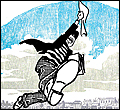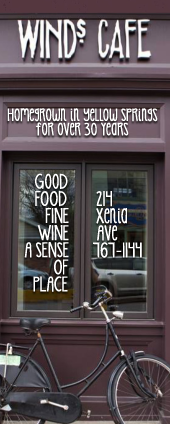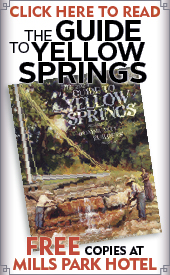Articles About invasive species
-
Local, state deer population mounts

Yellow Springs resident and professor of biological sciences at Wright State University Don Cipollini told the News last week that there are currently around 800,000 deer in the state.
-
Yellow Springs Tree Committee to host webinar on longhorned beetle

The Yellow Springs Tree Committee will host a webinar titled “Asian Longhorned Beetle: The Threat in Black and White,” on Monday, July 24, at 6 p.m.
-
Meet the Glen Helen land manager

It’s a lot to look after: The Glen contains over 1,100 acres of land and a 15-mile network of footpaths. It’s home to deep-seated Indigenous histories, untold numbers of flora and fauna, geologies and ecologies, waterways and wildlife.
-
Invasive of the month— Impact of ornamentals not pretty

The present article is the last in this season’s “invasive of the month” series, which began with a two-part article on the local impact of non-native invasive plants last spring, and continued with monthly features focused on specific invasives of local concern. The series was undertaken in consultation with Glen Helen.
-
EDITORIAL — ‘We are the weeds’

There’s an irony in writing about invasive species that’s impossible to escape. Which species is more invasive than my own? [Editorial republished from the Nov. 7, 2019, issue of the News.]
-
Invasive of the month— Japanese stiltgrass moves in

Japanese stiltgrass is on the move in Yellow Springs, creeping into yards and forested areas. Here’s how to identify, and root out, this non-native invasive grass.
-
Invasive of the month— climbing vines

If you see something green in winter, it’s probably wintercreeper, a non-native invasive species of euonymus. Asian bittersweet is a little harder to identify. It’s most noticeable in the fall, when its leaves are off and bright red berries and yellow seed capsules make the plant attractive to some.
-
Good green, bad green

Not all green is “green.” That’s the message from local land managers who are combating a host of non-native invasive plant species that menace locally preserved and reclaimed lands.
-
‘Green death’ and other invasives

Drew Diehl calls it “the Green Death.” Pervasive in many areas, a single non-native species of honeysuckle — Amur honeysuckle — has transformed the local landscape over the last 30 years.
-
Rise against the green Glen invaders

If weeding the flower garden out back sounds bad, imagine weeding a forest. Then imagine that forest encircled by an army of invasive species.












Recent Comments